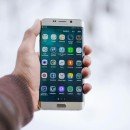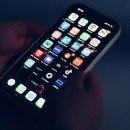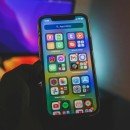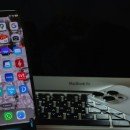
In today’s fast-paced digital age, the intersection of technology and healthcare is fostering remarkable progress. Smartphones have transformed from simple communication tools into powerful platforms hosting a plethora of innovative apps—ranging from measuring vital signs and tracking fitness to improving productivity and unlocking customized features for Android users. As we move toward a future dominated by mobile solutions, one area experiencing a quiet, yet profound, revolution is the integration of medical translation services into health-related mobile applications.
As healthcare becomes more globalized, language barriers remain significant obstacles to accessing quality care. Mobile technology, with its reach and adaptability, is ideally positioned to address this challenge by empowering both patients and practitioners through accessible, precise communication. Let’s explore how health care translation is driving innovation in medical apps and reshaping the landscape of modern healthcare.
The Vital Role of Medical Translation Services in Healthcare
Healthcare is fundamentally about communication. Whether it’s a doctor explaining a diagnosis, a patient describing symptoms, or a hospital sharing vital records, effective exchange of information can be a matter of life and death. However, with over 7,000 languages spoken globally, miscommunication in medical settings is a real and often dangerous risk.
Health care translation ensure that healthcare information is accurately conveyed, enabling patients to understand their conditions and treatment options regardless of their native language. Institutions can also benefit, as accurate translation reduces liability risks and improves patient outcomes. The integration of these services into mobile platforms is now amplifying their impact exponentially.
Innovative Mobile Apps Utilizing Health Care Translation
The versatility of mobile app inventions is astounding, but some of the most exciting progress comes from apps that break language barriers in healthcare. Here’s how innovative mobile solutions are merging medical translation services with intuitive features to improve care delivery:
- Real-time Translation Tools: Mobile apps are increasingly equipped with real-time translation for patient–provider conversations, transforming smartphones and tablets into handheld interpreters. Using advanced machine learning and AI, these apps can detect medical terms, slang, and context to provide more accurate translations than general-purpose tools.
- Multilingual Medical Records: Apps managing electronic health records now allow seamless translation of critical patient information—ranging from prescriptions to surgical histories—ensuring continuity and clarity of care during international travel or between institutions in diverse communities.
- Remote Consultations: Telemedicine is revolutionizing healthcare accessibility, and integrated translation features are making virtual doctor appointments possible in dozens of languages. This dramatically widens access for non-English-speaking or immigrant populations, enhancing both diagnosis and follow-up care.
- Drug Labeling and Instructions: Apps that scan medication barcodes can instantly provide translated dosage instructions, side effect information, and warnings. By leveraging mobile phone cameras and cloud-based health care translation databases, users remain informed and safe—even when dealing with medications from foreign manufacturers.
- Patient Self-Management and Education: From diabetes monitoring to post-surgery rehabilitation, instructional content needs to be clear and comprehensible. Apps are now embedding video, audio, and text instructions in multiple languages, supporting patients’ engagement and adherence to treatment across cultural divides.
The Technology Behind Seamless Health Care Translation in Apps
Accomplishing precise medical translation within a mobile app demands more than direct word-for-word conversion. Modern health care translation relies on:
- Specialized Medical Glossaries: Unlike everyday language, medical terms have specific, often complex meanings. Quality translation databases are curated by professionals, ensuring clarity and accuracy.
- AI and Natural Language Processing (NLP): Machine learning models trained on millions of medical documents are deployed within apps, allowing nuanced context understanding for better translations.
- Data Security Protocols: Protecting patient privacy is paramount. Leading apps utilize secure servers, encryption, and user authentication to ensure compliance with regulations like HIPAA and GDPR.
- User-Friendly Interfaces: Even the best translation engine is only as good as its usability. Innovative apps focus on intuitive design, voice-to-text input, and accessibility features to serve a broad spectrum of users.
For those looking to implement or enhance mobile health solutions, working with professional translation providers such as health care translation services is critical to maintain high standards of accuracy and reliability.
Inspiring New Ideas: The Future of Translation-Powered Health Apps
The growing demand for health apps equipped with robust translation capabilities serves as an inspiration to inventors, developers, and healthcare professionals alike. Here are a few trends driving the next wave of mobile health innovation:
- Voice-Activated Health Assistants: Imagine a multilingual health assistant embedded into your phone, capable of guiding users through symptom checks, appointment scheduling, or even medication reminders in the user’s native language.
- Wearable Integration: Future measuring tools, such as smartwatches or fitness bands, could transmit alerts and health insights directly in the wearer’s language, taking personalized care global.
- Collaborative Diagnosis Platforms: Apps could connect international healthcare teams and facilitate cross-border second opinions, with instant, medically certified translation ensuring clarity as doctors from around the world collaborate on complex cases.
- Mental Health Support: Multilingual counseling helplines and therapy apps, powered by health care translation, can help break down stigma and support users from diverse backgrounds, no matter where they are.
- Augmented Reality for Medical Training: AR-powered educational apps could provide step-by-step medical procedure instructions in multiple languages, supporting global training and capacity building among healthcare professionals.
Each of these ideas shows the immense potential for mobile applications to harness medical translation, broadening their appeal and functionality beyond traditional boundaries.
Empowering Global Health Through Technology and Translation
The convergence of innovative mobile technology and medical translation services is rapidly dismantling the language barriers that historically impeded global access to healthcare. From measuring tools and productivity apps to specialized Android features, smartphones are evolving into indispensable medical companions, providing users of all linguistic backgrounds with the tools and information they need for better health.
As we continue to witness rapid advancements, it’s clear that the synergy of health care translation and technology will remain at the heart of efforts to democratize healthcare and inspire the next generation of app inventors. Whether you are a developer, healthcare provider, or simply a curious user seeking inspiration for your next big idea, embracing these innovations—even by exploring collaborations with established medical translation services—can be the key to transforming lives and communities worldwide.
As the world becomes smaller and ever more connected, let’s harness the true power of mobile innovation—not only to invent, but to include. The future of health is global, and with translation at our fingertips, it’s within everyone’s reach.
Recent Posts

How Editing and Proofreading I...

AI Tools Behind the Latest Pho...

Innovative Phone Apps from Com...

Smartphone-Apps, die Arbeit, S...

Scopri App Creative per Misura...

De Herramientas de Simetría a...
Share it.
Links
© Copyright 2022 Phone Labs


